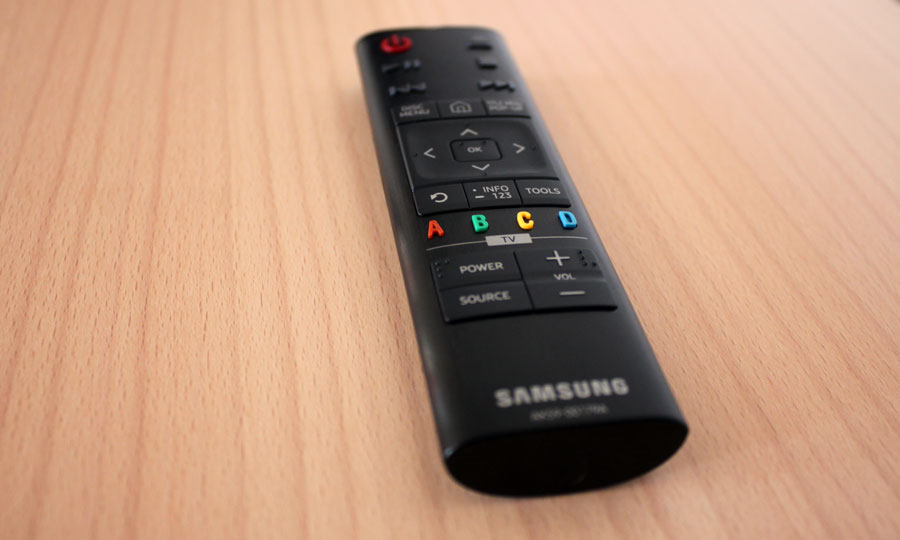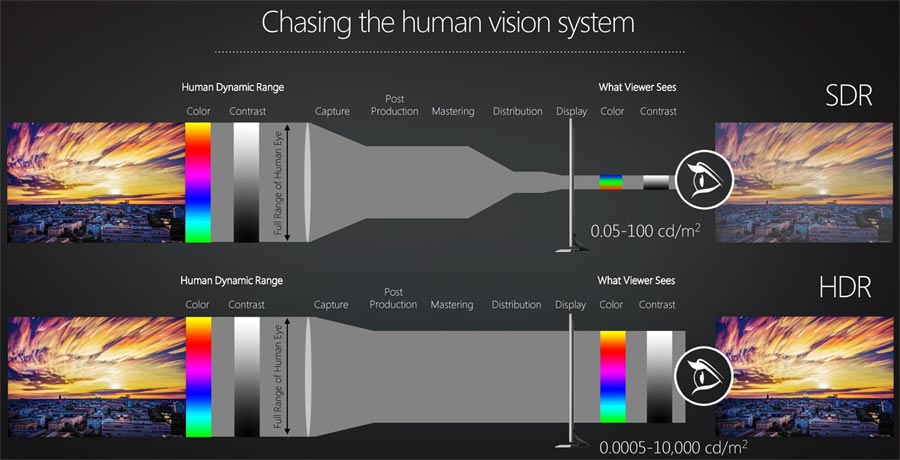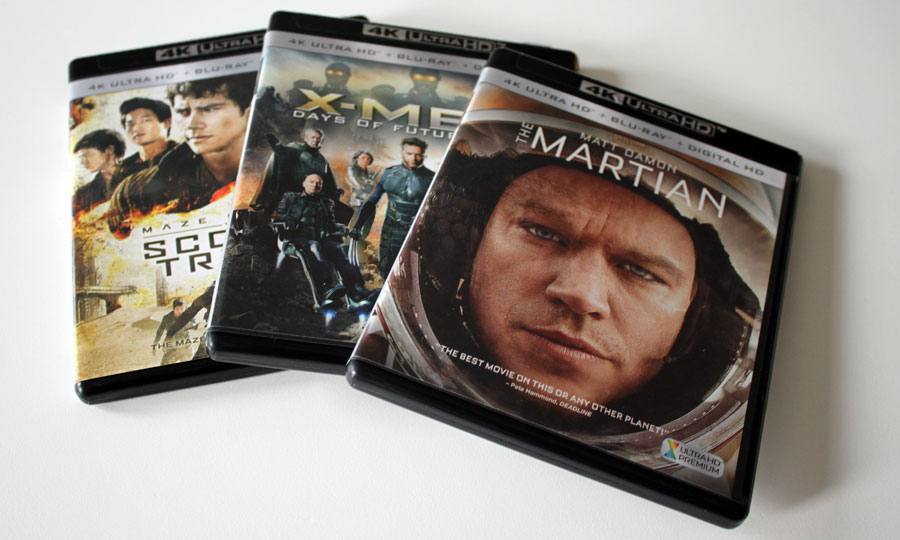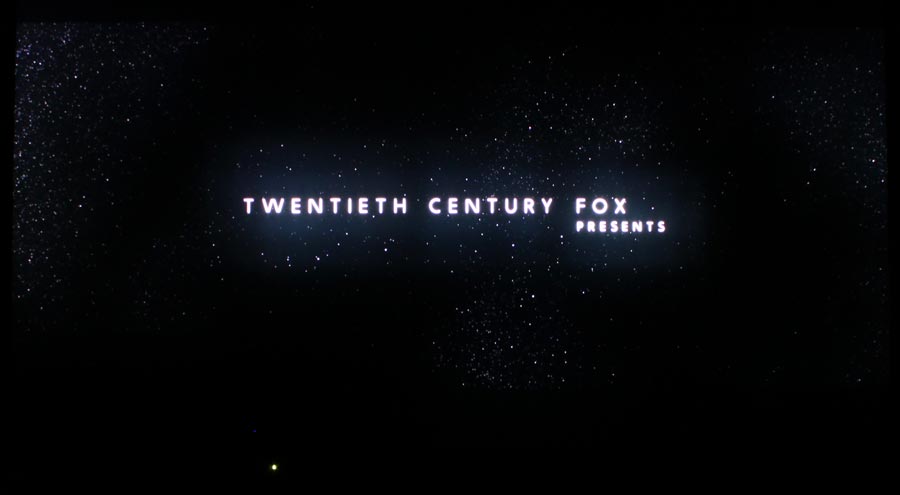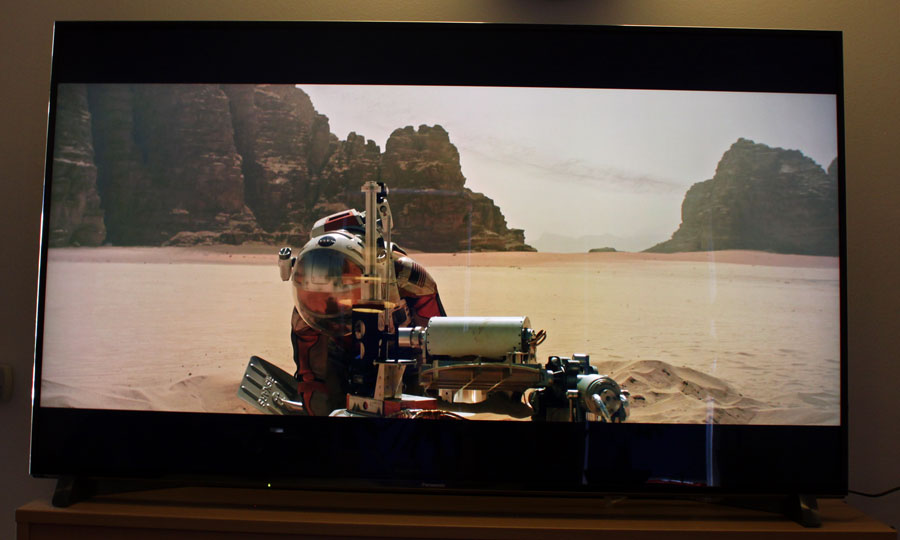Review: Ultra HD Blu-ray
Firs timpressions - Functionality - What is UHD Blu-ray? - Measurements - Picture experience - Conclusion
It feels like an eternity. The industry started talking about the next Blu-ray standard years ago but the release was postponed several times. Besides giving streaming a head start on 4K, it might not have been such a bad decision after all because it means that the UHD Blu-ray standard now incorporates HDR (high dynamic range) as a mandatory element. As you might know, many have argued that HDR is a more important picture improvement than 4K alone. We will of course put that to the test and to do that we got our hands on Samsung UBD-K8500 and hooked it up to several different TVs, ranging from ultra high-end to affordable mid-range.
For this review we will focus on the UHD Blu-ray format as a whole instead of focusing on the actual hardware from Samsung. We have so many questions. Does a new physical disc format make sense when streaming is already capable of delivering 4K/HDR? How much does the higher bitrate mean? Is HDR the true star of the show? No time to waste, let us dig in.Price and retailers:
Specifications
Ultra HD (3840x2160)
HDR (high dynamic range)
Rec.2020 color gamutUHD Blu-ray
HD Blu-ray
DVD
CDDolby TrueHD
DTS-HD Master Audio
Dolby Atmos
DTS:X(HxWxD) 4.5 x 40.6 x 23 cm 4.2 kg USB
EthernetHDMI (1x 2.0)
HDMI audio
OpticalWiFi MPEG4
HEVC
VP9Smart Hub Samsung remote Manual
Remote control
BatteriesSubscribe to our Newsletter, Facebook, twitter or RSS to receive notice when new reviews are publishedFirst impressions
A Blu-ray player looks like Blu-ray player does. The rectangular boxes are not exactly aesthetic wonders and designed to be hidden away in furniture, only to demand attention when a new disc has to be inserted. Samsung has spiced it up with a slightly curved design to complement its curved TVs. Yeah well…
In these years of digital revolution it surely feels a little old-fashioned to change a disc. I cannot recall the last time I put on a music CD but for those of us who grew up with CDs, DVDs and Blu-rays it still has a special sound, smell and feel. That is probably just the nostalgia talking. Speaking of special sounds, UBD-K8500 is a little noisy. It has a fan that is definitely audible.
There are a few touch buttons located on the player. The disc tray is integrated in the left side and is hidden behind a small movable plastic hinge that automatically slides down every time you eject the tray.
There are two HDMI outputs, one for picture and one for audio. There is also optical audio out but if you are planning to enjoy HD audio you should opt for the HDMI audio port. You do not need new HDMI cables for UHD Blu-ray players but there is no HDMI cable in the box. The power supply is integrated so all you need is a simple power cable (which is included). There is an angled power cable in the box but the position of the power port on the player means that the angled cable connector either partly covers the fan exhaust or extends beyond the player’s left edge. Sloppy design.
The remote is a small pocket-sized thing with 25 buttons, most of which are completely irrelevant for a Blu-ray player. You will be using mostly the four directional buttons, the OK button, menu buttons and playback controls that are handily placed at the top. Unfortunately the button positions mean that you will often hit the menu buttons by accident, which then takes you to the main menu. That can be quite annoying.
The buttons each have a special feel to them so you can navigate the player in a dark room but it is still hard to push the right one because they are so small. People with big hands will hate this tiny remote.User experience & features
At the moment, only Samsung, Panasonic and Philips have announced UHD Blu-ray players and each company has decided to integrate apps for streaming. The idea is to sell a complete package, because not every TV or projector has built-in apps.
On Samsung UBD-K8500 you can download apps such as Netflix, YouTube, Spotify, Plex, and TED Talk. The player is based on Samsung’s old Smart TV platform, which feels a little slow and old. It would have been nice if Samsung had integrated the new Tizen operating system instead.
The general user interface is made up of three main tiles; Blu-ray, Multimedia and Samsung apps as well as three smaller tiles at the bottom. From the multimedia menu you access videos and photos from USB devices. We ran through our usual suite of 4K and HDR demo clips and the player accepted most of them. You can see which in the "Measurement" section.
The Netflix app is the same that come installed on most Smart TVs. It supports user profiles and also 4K streaming if you have the player connected to a 4K TV. Unfortunately, it does not support Netflix’s HDR streams.
The YouTube app is based on the classic TV interface. If you log in you have access to your subscribed channels. There is also a 4K category in the app. The player supports YouTube 4K streaming but it not expected to support YouTube’s HDR streams that will roll out later this year.
You also have access to apps such as Amazon Video, M-Go and Vudu. The latter does not offer 4K on Samsung’s player. We are told that UBD-K8500 has started supporting Amazon Video in HDR after we wrapped up our review.
Notice the "screen mirroring" tile. It will allow you to mirror a phone screen onto the TV. However, it only works with Samsung’s newer Galaxy devices.
Samsung’s player offers several settings options, including options for picture modes (Standard, movie etc.). We cannot stress enough how bad of an idea that is to include picture modes on a Blu-ray player. It is enough that TV manufacturers take the liberty to change how colors look after movie studios have spent months grading movies and fine-tuning the look and feel of the picture, but including such settings in the player adds another link in the chain to account for. This is not much different to how Oppo started integrating Darbee “picture enhancement” systems in its players. It is a bad practice that should stop. Do not use these settings. Use the ones provided on the TV instead.
Speaking of picture settings you should set “HDMI Deep Color” to “Off” on the Samsung UBD-K8500. This legacy setting related to regular Blu-ray discs – not UHD Blu-ray.
Another weird quirk that we noticed is that TVs generally fail to register a HDR signal coming from the player via HDMI. This means that you manually have to make sure to set up the TV to expect a HDR signal on the HDMI port that the player is connected to. How you do that differs from brand to brand but check out our Panasonic DX900 and Sony XD93 reviews for more information. Not exactly user friendly…
You should also be aware that not all HDMI ports on 4K/HDR TVs are HDMI 2.0 (with HDCP 2.2) enabled. Typically only one or two are true HDMI 2.0 ports. To be on the safe side connect your UHD Blu-ray player to HDMI1 or HDMI2.Understanding UHD Blu-ray
The DVD came out in 2000 to replace video tapes. In 2006, HD-DVD and Blu-ray competed for relevance, and Blu-ray won. Ten years later, UHD Blu-ray has arrived.
To get started let us briefly remind everyone what the “UHD Blu-ray” standard is about because despite the name, UHD (or 4K, we use both to refer to 3840x2160 pixels throughout the review) is only a single component.
In essence, UHD Blu-ray is a combination of:
UHD Blu-ray specifications
| Video codec | HEVC |
| Resolution | 3840x2160 pixels |
| Aspect ratio | 16:9 (container) |
| Color bit depth | 10-bit per channel |
| Color space (primaries) | BT.2020 (container) |
| Color chroma subsampling | 4:2:0 |
| Frame rates | 23.976p, 24p, 25p, 50p , 59.94p, 60p |
| Peak video bit rate | 100 Mb/s |
| HDR EOTF | SMPTE ST2084 |
| Metadata definition | SMPTE ST2086 |
| HDR formats | HDR10 mandatory Dolby Vision optional |
4K UHD
A resolution of 3840x2160 pixels is pretty self-explanatory. It is 4 times more pixels than Full HD (1920x1080), which was used on the previous Blu-ray standard.More pixels equal higher definition – or more image details. To take full advantage of more pixels you need to have a large screen - the larger the better - or move closer to the screen. We generally recommend buying a 55” TV as the smallest size to enjoy 4K from a distance of 2-3.5 meters and 65” or larger for an optimal 4K experience.
HDR (high dynamic range)
HDR (high dynamic range) is, contrary to popular belief and Samsung’s marketing, not related only to peak brightness. It takes into account the full dynamic range – hence the name – of the picture. It will make blacks deeper, whites brighter, and ensure that details at each end are not crushed. It will allow displays to reproduce images with a dynamic range that better corresponds to the real world. Some manufacturers argue that you need 1000 nits displays to reproduce HDR but that is an oversimplification. There is no point in having 1000 nits peak brightness if the display cannot, at the same time, reach deep blacks. Again, HDR is about the full dynamic range.HDR is an end-to-end approach that requires every link of the chain from camera to display to support HDR. It is a complete redefinition (a new EOTF function) of how data is transformed into colors/light on a display. It no longer relies on analog principles. It is a new approach for the digital age and it can potentially have a greater impact on the picture experience than most people realize. To make HDR possible we need at least 10-bit per channel so that it what has been included in the UHD Blu-ray standard. If you want to learn more about HDR see our in-depth article here.
Many TVs will be capable of receiving and processing a HDR signal (all mid-range 2016 TVs and up) but that it not enough. The TV also needs the proper hardware the reproduce HDR. Not many TVs today have this hardware. We will expand on the topic in the picture section. The industry has set up minimum requirements for HDR as part of the “UHD Premium” logo.
There are currently two relevant HDR formats:
HDR10 is mandatory on UHD Blu-ray, while Dolby Vision is optional, meaning that manufacturers can decide to implement support or not. Dolby Vision is sold as a "premium" HDR format compared to HDR10. Dolby argues that Dolby Vision content is mastered at over 4000 nits peak brightness to ensure full dynamic range and that it can utilize “dynamic metadata” to adjust HDR on a scene-by-scene basis, whereas HDR10 only has one overall HDR grading for the entire movie, also referred to as static metadata. The industry is working towards adding dynamic metadata to HDR10, too.
There are currently no UHD Blu-ray players with Dolby Vision support. Only a few streaming services have adopted the format so far. Netflix has already started streaming in Dolby Vision, and Amazon will start soon.
The picture below is borrowed from the UHD Alliance
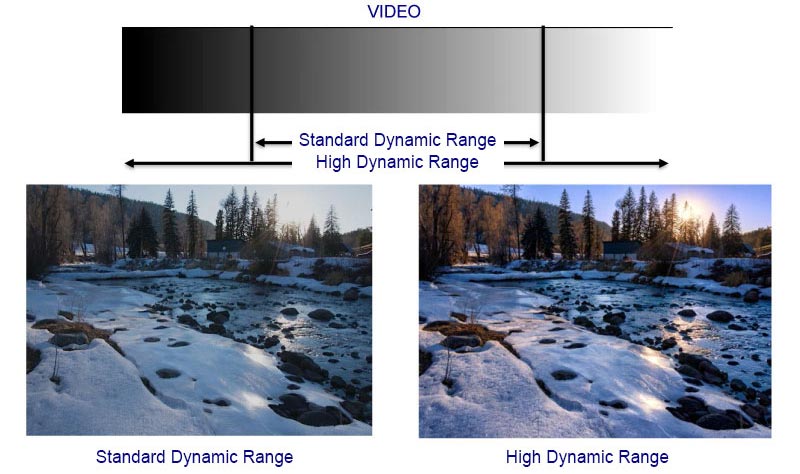
Wide color gamut (BT.2020)
The industry generally prefers to include “wide color gamut” as part of HDR, which has to do with the fact that the expanded dynamic range also enables displays to expand the color gamut. However, it is possible to use wide color gamut without HDR. UHD Blu-ray is based on the BT.2020 – or Rec.2020 - color space, which is much wider than the BT.709 color space used for HD.However, for now we have to think about BT.2020 as a "container"; a future-proof solution.
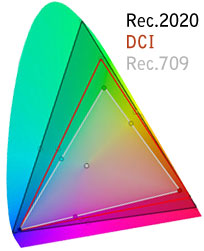
And more importantly, by using BT.2020 as a "container" we eliminate the need to create intermediate color space standards. As long as the display correctly states (within BT.2020), which color coordinates it can reproduce, it can have any "color space", even an odd one.
Lastly, BT.2020 enables the entire industry to move past the headaches of BT.709, which was rushed into HD standards and actually hindered adoption of wide color gamut displays.
Together these three components (4K, HDR, wide color gamut) lay the foundation for the next step in picture quality. A graph like this one from AMD probably illustrates it best. As said, HDR is an end-to-end system.
High bitrate
So you might be wondering. Streaming services such as Netflix and Amazon have already started streaming in 4K and HDR, so what is the difference?Compared to streaming UHD Blu-ray discs have the advantage of much higher bitrate. In other words less compressed images. The standard supports up to 100 Mb/s video bitrate (100 Mb/s is the theoretical max of the MPEG-TS buffer rate, even if Blu-ray discs can read at higher rates). However, the actual bitrate will likely be much lower than 100 Mb/s on most discs due to several factors, including the amount of disc layers, studio workflows, cost considerations, and more.
Streaming services typically stream 4K/HDR at 18-25 Mb/s.
You can play UHD Blu-ray discs only on UHD Blu-ray players. The players are backwards compatible, meaning that you can also enjoy your HD Blu-rays, DVDs and CDs. However, you cannot insert a UHD Blu-ray disc into a regular HD Blu-ray player.
Oh yeah, let’s not forget: UHD Blu-ray discs are region free!
Measurements
In this "measurement" section we have included all our measurements. The video files in the table were played via USB on UBD-K8500.| Power consumption | Out-of-box | Calibrated |
|---|---|---|
| Menus | 24 W | - |
| Disc playback | 24 W | - |
| Standby | 0.2 W | - |
| Time measurements | Tid |
|---|---|
| Start-up (until responsive) | 12 s |
| Start-up (until picture comes on) | 11 s |
| Start-up (until Blu-ray comes on) | 27 s |
| Netflix app start-up | 8 s |
| Youtube app start-up | 7 s |
| Video file | Specs | Status |
|---|---|---|
| Dubai 4K | 4K (3840x2160 pixels) – 23.976fps – 10 bit colors - BT.709 color space – 4:2:0 subsampling – 51.4 Mbps bitrate – HEVC - .ts file | Works |
| Costa Rica HD | HD (2560x1440 pixels) – BT.709 color space – 4:2:0 subsampling – 6.54 Mbps bitrate – VP9 - .mkv file | Works |
| Costa Rica 4K | 4K (3840x2160 pixels) – BT.709 color space – 4:2:0 subsampling – 12.71 Mbps bitrate – VP9 - .mkv file | Works |
| Terrifying Pyroclast 4K | 4K (3840x2160 pixels) – BT.709 color space – 4:2:0 subsampling – variable bitrate – VP9 - .mkv file | Fails |
| Big Buck Bunny HD (.ts version) | HD (1920x1080 pixels) – 8 bit colors - YUV color space – 4:2:0 subsampling – 2.5 Mbps bitrate – 60fps - HEVC - .ts file | Works |
| Big Buck Bunny HD | HD (1920x1080 pixels) – 8 bit colors - YUV color space – 4:2:0 subsampling – 60fps - 2.2 Mbps bitrate – HEVC - .mkv file | Works |
| Jellyfish HD | HD (1920x1080 pixels) – 8 bit colors – BT.709 color space – 4:2:0 subsampling – 98.3 Mbps bitrate – AVC - .mkv file | Works |
| LG Arctique 4K | 4K (3840x2160 pixels) – 8 bit colors – YUV color space – 4:2:0 subsampling – 50.0 Mbps bitrate – 29.970fps - AVC - .mp4 file | Works |
| Eutelsat 4K demo | 4K (3840x2160 pixels) – 10 bit colors – YUV color space – 4:2:0 subsampling – 23.1 Mbps bitrate – 50fps - HEVC - .ts file | Works |
| HDR Camp | HDR (high dynamic range) - 4K (3840x2160 pixels) – 10 bit colors – BT.2020 color space – 4:2:0 subsampling – 75.6 Mbps bitrate – 59.940fps – HEVC ([email protected]) - .mp4 file | Works |
| HDR Smurfs 2 clip | HDR (high dynamic range) - 4K (3840x2160 pixels) – 10 bit colors – BT.2020 color space – 4:2:0 subsampling – 56.4 Mbps bitrate – 23.976fps – HEVC (Main10@L5) - .mp4 file | Works |
| HDR Chappie clip | HDR (high dynamic range) - 4K (3840x2160 pixels) – 10 bit colors – BT.2020 color space – 4:2:0 subsampling – 60.3 Mbps bitrate – 23.976fps – HEVC (Main10@L5) - .mp4 file | Works |
| Ghost Towns 8K | 8K (7680x4320 pixels) – variable frame rate – 8 bit colors - YUV color space – 4:2:0 subsampling – 20.7 Mbps bitrate – AVC - .mp4 file | Fails |
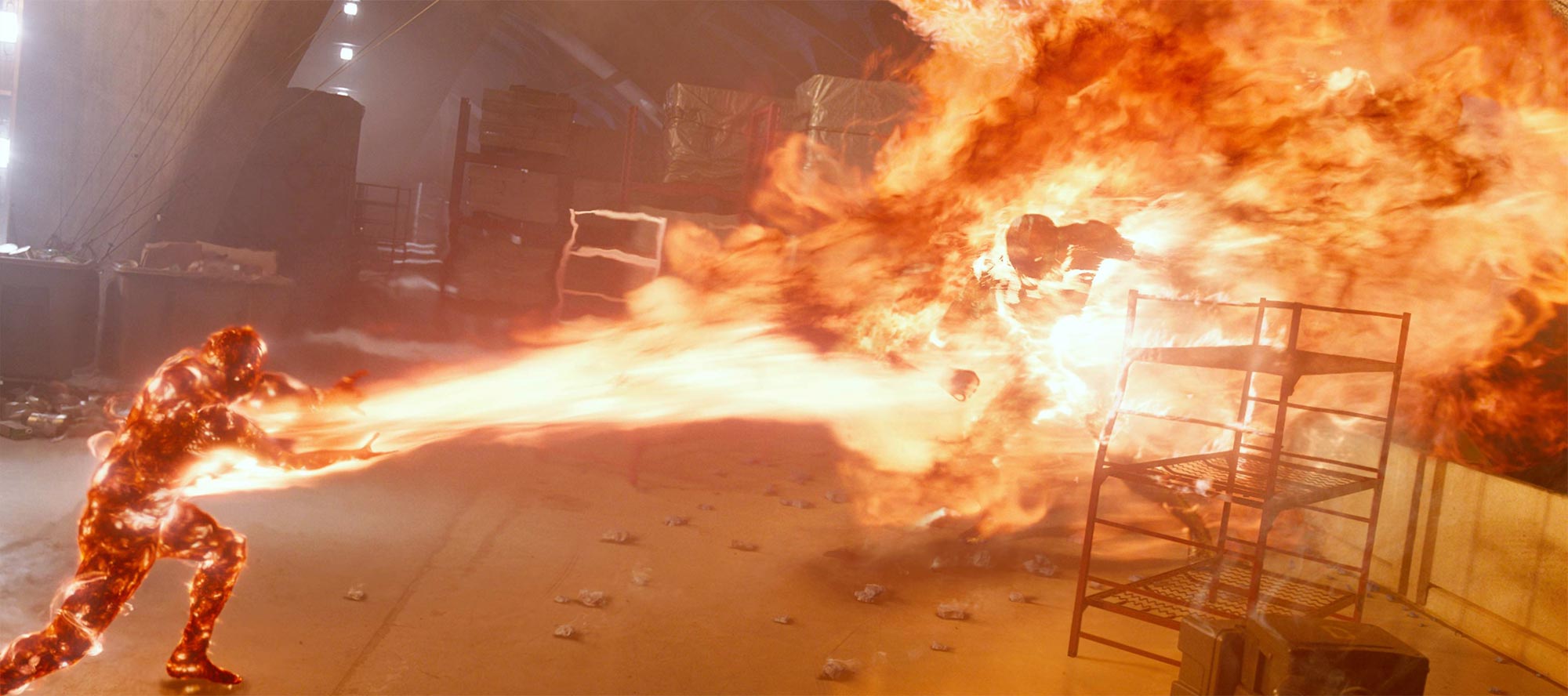
The picture experience
We have gotten our hands on three UHD Blu-ray discs; The Martian, X-Men: Days of Future Past and Maze Runner: Scorch Trials. All three discs utilize 4K+HDR (high dynamic range). We also have some clips from Mad Max: Fury Road.For the test we hooked up the UHD Blu-ray player to several TVs:
As you can see, these TVs range from quite affordable to ultra high-end. We have a lot to say on the matter but let us start with the Panasonic DX900, which is the only "UHD Premium" certified TV of the bunch. The same "UHD Premium" logo is displayed on each of the UHD Blu-ray covers.
Watching UHD Blu-ray on Panasonic DX900 is quite the experience. DX900 actually has the hardware to reproduce high dynamic range and can reproduce almost the full DCI-P3 color gamut, which is a very visible improvement over regular Blu-rays that in comparison look a little dull. Wide color gamut lets TVs reproduce colors than have been out of reach to date, including grass green and Coca Cola red. The more saturated reds in the DCI-P3 color gamut helps a movie like The Martian portray the red sand on Mars more faithfully. Compared to the standard version of The Martian, the difference is quite noticeable.
The local dimming system in DX900 (512 zones) ensures that pictures stay vibrant and dynamic, which makes HDR look excellent. The darkest and brightest areas of the picture are reproduced faithfully and with precision. Shadow details are not crushed and the blacks look inky and vibrant. Specular highlights such as sun reflections look bright and intense but not too intense. It really is a beautiful picture.
In the photos below we have tried to capture some of the movie scenes but since our camera does not capture in HDR and your screen cannot reproduce HDR is not a very good representation. Still, notice the details in the face and the dynamic range. In the photo with the space suits notice how the small light panel to the left really lights up. The reflections from the sun in the helmets also look very intense and real in other scenes, and far more natural than what a regular Blu-ray disc can reproduce.
Watching UHD Blu-ray on Panasonic DX900 can be mesmerizing and if you own a high-end TV like DX900 you have to buy a UHD Blu-ray player. You have to!
With that being said, however, we also have to point out that DX900 has some shortcomings that affect the UHD Blu-ray viewing experience. DX900 has full-array local dimming, yes, but the number of zones is simply too low to avoid blooming and halos. In a scene like the one below we noticed very visible halos around text and stars. The stars are not as bright as they should have been either. No LCD can reproduce a scene like this and do UHD Blu-ray full justice.
If you have read our reviews you already know this but DX900 is the only TV that we have included for this test that has full-array local dimming (and the only one that meets the minimum requirements for HDR, namely “UHD Premium”). As you can imagine the experience of watching UHD Blu-ray on DX900 is better than any of the other TVs included in this test.
A side-note: An OLED display would have been able to reproduce the sky/stars scene as intended with perfect blacks and bright, sparkling stars because on OLED every single pixel – not just a few hundred zones – is a light zone that can reproduce all shades from perfect black to very bright. We have not included an OLED TV for this test simply because we did not have one available in time. We will soon review the LG E6 OLED, which is one of the 2016 OLEDs, and comment on the experience of watching UHD Blu-ray.
Sony XD93 also claims to support HDR but unlike Panasonic DX900 it does so by utilizing edge LED. While still technically a high-end TV, it cannot compete with DX900. UHD Blu-rays generally look good on XD93 but not as good as on DX900 that has the advantage of much deeper blacks; the low end of high dynamic range, which is just as important, if not more important, than the upper end of the dynamic range.
Because XD93 only has a very limited form of local dimming, any scene with high-contrast shots – which is what HDR is about – will suffer to some degree. Below is an example (exaggerated by the camera) that demonstrates how the limited zone control can affect black levels and cause blooming/haloing. It affects the UHD Blu-ray viewing experience, too.
Sony XD93 still benefits from 4K resolution and the wide color gamut used in UHD Blu-ray movies. In many scenes the HDR effect looks impressive and intense. Sony has chosen not to support the “UHD Premium” initiative but claims that XD93 has the hardware to meet the minimum specifications for HDR set by UHD Alliance.
Scaling down to mid-range TVs like Panasonic DX750, Sony XD85 and Philips 7101, is quite the difference. Unfortunately these TVs do not have the hardware to reproduce HDR - and it shows. The most noticeable difference compared to regular Blu-ray on mid-range TVs like these is actually not 4K resolution but wide color gamut - at least for the material we have examined so far. You will notice how especially reds and greens look more saturated. However, you do not get the same dynamic range as with DX900 and the difference is striking.
Of the three mid-range TVs mentioned above DX750 is the best (or least bad) for HDR since it has a VA LCD panel but common to all of them is that black levels worsen significantly in HDR. This happens because feeding HDR material to the TV pushes it into a “HDR mode” where the backlight setting in the menu gets pushed into max. This does not mean that the TVs look overly bright because the pixels try to compensate and pull down the average brightness level to a typical brightness level. However, this trick more or less destroys black levels and crushes shadow details. Blacks simply look grayish.
It will not help to reduce the backlight option in the menu because studios grade HDR content to low average brightness level (optimized for dark room viewing). One would think that a sky or sun beams reflecting off a car would then "pop" with intensity. However, that it not the case either. The process of forcing mid-range TVs into HDR mode more or less just moves (instead of extending it) the dynamic range and crushes black levels. Manufacturers can claim that these TVs support HDR on paper, but in practice they do not. Marketing? Yes, but also damaging to the whole concept of HDR.
These three TVs do not meet the minimum requirements for HDR in “UHD Premium”.
With that being said HDR does have some advantages on mid-range TVs. At times it can certainly look decent but it depends a lot on the scene. Most of the time the improvement to the picture experience stems from wide color gamut that HDR content is graded in. 2016 mid-range TVs typically support that. But we saw just as many limitations on these TVs. It is a bumpy rollercoaster ride and we are not sure that we like it.
Scaling down even further to affordable 4K TVs like Philips 6501 (that still claims HDR support but has no wide color gamut or hardware to reproduce HDR) is only making matters worse. You would think that a TV like this would benefit from the 4K resolution but instead its complete lack of hardware for HDR actually makes the picture look worse. Blacks are totally destroyed. We would honestly rather watch HD Blu-ray than UHD Blu-ray on a TV like Philips 6501.
Philips’ two TVs also had issues with the frame rate while playing UHD Blu-ray. The picture stuttered so much that we had to leave it. It was very unpleasant to look at.
There are also “pure” 4K TVs, like the ones launched in 2014 and 2015. With TVs like these you avoid the “pseudo HDR” effect that destroys some elements of the picture but you can still benefit from 4K resolution. Here, we would say that UHD Blu-ray is a very subtle improvement. You only benefit from 4K and for that you need a fairly large TV. What Hollywood has neglected to tell us is that many movies that are being sold as 4K are in fact not 4K from end-to-end. Special effects are generally rendered in HD resolution and cameras like Alexa shoot in 2-3K resolution that is then upscaled to 4K. Movies shot on film camera also exhibit quite a bit of movie grain.
To sum it up, if you own a 4K TV with no HDR support and no support for wide color gamut we would not necessarily recommend against buying an UHD Blu-ray player but you should expect a relatively minor improvement. It might be better to save the money and use it for a true HDR-capable TV instead. Is UHD Blu-ray irrelevant for "pure" 4K TVs? No, but in our opinion the difference between a 4K TV and a HDR TV like DX900 is dramatic.
Our point is that the most visible improvement from UHD Blu-ray is in fact HDR (including wide color gamut), not 4K resolution. However, only certain TVs can reproduce HDR. It simply requires a certain level of hardware that currently only high-end TVs have.
Below we have taken some shots of SDR (left) vs. HDR (right) on Panasonic DX900 that has the hardware to reproduce HDR. Our camera cannot capture HDR and your screen cannot reproduce it but you should still be able to get an idea of the effect. Ignore that bright details are clipped (camera related). Focus instead on how colors look more saturated and on the wider dynamic range (highlights and black levels – and how you can have both in the same scene).
As such UHD Blu-ray is a niche format for enthusiasts and we have a hard time seeing it becoming a mainstream category now that streaming is moving to 4K and HDR, too.
Streaming vs. UHD Blu-ray
Speaking of streaming, Amazon has offered HDR streaming for some now and Netflix has just started offering HDR streaming in two formats; HDR10 and Dolby Vision. There are no current UHD Blu-ray players that support Dolby Vision so on paper Netflix might appear to be the better choice since Dolby Vision is a “premium” HDR format. However, UHD Blu-ray discs can potentially have far higher bitrates, which translates into a better picture experience.We were not able to compare UHD Blu-ray and streaming on a 1:1 basis since none of the movies we have on UHD Blu-ray are available through Netflix or Amazon in HDR format. However, it is easy to see that Netflix and Amazon’s HDR streams are more compressed. The streaming companies also employ wide color gamut, which is a visible improvement but the picture overall looks more compressed, especially in dark scenes that suffer from compression artefacts.
We will revisit the subject later but for now UHD Blu-ray offers a visibly better experience because of the higher bitrate. To be fair, HDR via streaming is promising and it is not hard to imagine what 500 Mb/s or 1 Gb/s internet connections that are started to become widely available in some regions will make possible. After all, there is a physical cap on UHD Blu-ray discs. The internet can expand almost indefinitely.
Some thoughts on movies
If we had to say a few words about The Martian, X-Men: Days of Future Past and Maze Runner: Scorch Trials, we think that The Martian is the best example of where HDR can take us.We have seen more impressive HDR demonstrations in the last few years but The Martian has plenty of good scenes to show off the wide color gamut and the high dynamic range. The red sand on Mars is reproduced in a tone of red that is simply not possible with regular Blu-ray and SDR. The highlights in the picture are intense and far more believable than what you typically see with HD Blu-ray.
Taste differs, of course, but if you have yet to see the three movies I would say that The Martian is an OK movie but easily forgettable. X-Men is a good superhero movie, if you like that genre. Maze Runner is a teenage movie. I look forward to seeing some great movies on UHD Blu-ray because even though the picture may look spectacular it matters little if the movie is bad. We hear that The Revenant – a great movie – should look absolutely spectacular in HDR but unfortunately we did not get our hands on a sample before we wrapped up the review.
We will have to examine more movies to get a deeper understanding of how big a potential HDR has but we suspect that animation movies, such as those from Pixar/Disney (who has yet to commit to UHD Blu-ray), will be some of the most impressive in HDR.
The industry expects more than 100 titles to be available before the end of 2016.
Watching UHD Blu-ray in daytime
There has been some discussion regarding watching UHD Blu-ray during daytime so let us try to address that, too. To understand the issue first you need to understand how HDR content is interpreted by TVs. On every single TV that we have examined together with an UHD Blu-ray player to date, HDR signaling forces the TV into HDR mode where the backlight setting is maxed out. In other words, there is no way to increase the backlight level further.UHD Blu-ray movies are color/light graded with dark room viewing in mind so the average picture brightness level is relatively dim, and slightly dimmer than regular Blu-rays. While we agree that the HDR picture is slightly too dark for a very bright living room we would not classify it as a major issue. We found UHD Blu-ray movies perfectly enjoyable on Panasonic DX900 during daytime.
Below you see a photo of The Martian on DX900 in daytime. There are windows opposite the TV but the shades are down. Even with the shades up it was possible to enjoy the movies but reflections in the glossy panel are of course highly distracting.
But it is true that the industry has to address this to get more out of HDR. Some manufacturers have started discussing HDR tone re-mapping algorithms. LG for example has talked about creating HDR Day and HDR Night profiles, which could help solve the issue. We will have to wait and see whether it works and how much re-mapping systems will affect the two ends of the dynamic range.
The industry is also trying to solve some of these issues by adopting so-called “dynamic metadata” that will allow a TV to move the PQ curve and adjust the average brightness level in the picture from scene to scene (even frame-by-frame). It could potentially solve this issue, too, but we will have to wait a see what the industry comes up with. If you want to learn more about dynamic metadata go here.
While there is no point in buying a UHD Blu-ray player for a HD TV, it is possible to connect the player to a HD TV. If you connect the player to a TV without an HDMI 2.0 port it will automatically downscale the picture to HD. You should also be aware that not all HDMI ports on 4K/HDR TVs are HDMI 2.0 and HDCP 2.2 enabled. High-end TVs typically offer three to four HDMI 2.0 ports, whereas more affordable TVs typically offer one or two. If you are unsure, connect the player to HDMI1.
We have no comments on the sound side of UHD Blu-ray since we do not have a Dolby Atmos / DTS:X capable sound system.
Conclusion
To sum up our experience with UHD Blu-ray it ranges from spectacular to insignificant. DVDs still outsell Blu-rays in many regions - in a market that is in decline - and we think UHD Blu-ray will be even more niche. Why? Because you need a high-end TV to enjoy the benefits of HDR, which is the true star of the show – not 4K.We paired Samsung UBD-K8500 with TVs ranging from ultra high-end to lower mid-range, including Panasonic DX900 and DX750, Sony XD93 and XD85 as well as Philips 7101 and 6501. DX900 outperformed the rest, which was expected due to the fact that it is the only one to employ full-array local dimming (FALD) – and is significantly more expensive. However, we had not expected the difference to be as significant as it was. FALD is more or less required for proper HDR reproduction on LCD TVs. Either that or OLED, which is a better display technology for HDR.
UHD Blu-ray on a TV like Panasonic DX900 can be spectacular, fantastic, amazing
UHD Blu-ray has been positioned as a premium format and it may actually be too premium. Connecting an UHD Blu-ray player to a HD TV has almost no effect; connecting it to a 4K TV looks good but not dramatically better; connecting it to a mid-range HDR TV is a rollercoaster of ups and downs; and connecting it to a true FALD LCD like Panasonic DX900 can be spectacular, fantastic, amazing.
As for Samsung’s player it looks like any plastic spinner out there, if not for the curved design. The remote is too tiny in our opinion, and we were disappointed about the lack of HDR support for Netflix. It is not slow, but not fast either. Think regular Blu-ray player in terms of operation and navigation (but longer start-up times). We experienced no issues with the player during the review.
So, should you buy UHD Blu-ray and become an early adopter? Only if you own a high-end LCD TV or an OLED TV, if you ask us.
Compare prices for Samsung UHD Blu-ray on Pricerunner
Price and retailers:
Apps is an evaluation of the app catalogue and the quality / user friendliness of the apps
Features is an evaluation of the built-in functionality and how useful it is, as well as build quality
User experience is an evaluation of user friendliness and the general use of the box, including the remote control
Total score weighted as: 40% Apps, 30% Features, 30% User experience.
All scores are calculated based on a moving maximum target, defined by what we currently consider the best on market. It is then presented as a percentage. This means that a score will fall over time as new and better media boxes set new standards. This allows you to compare scores across years. A score of 100% in a given category means that it is consider the best available media box in this category to date.
Features is an evaluation of the built-in functionality and how useful it is, as well as build quality
User experience is an evaluation of user friendliness and the general use of the box, including the remote control
Total score weighted as: 40% Apps, 30% Features, 30% User experience.
All scores are calculated based on a moving maximum target, defined by what we currently consider the best on market. It is then presented as a percentage. This means that a score will fall over time as new and better media boxes set new standards. This allows you to compare scores across years. A score of 100% in a given category means that it is consider the best available media box in this category to date.
Click for a more detailed explanation of the score system and our Awards
Potential for amazing picture quality
HDR was worth waiting a few extra years for (vs. 4K alone)
Wide color gamut improves colors
Higher bitrate than streaming
Requires high-end TV
No HDMI auto-detection on many TVs
Many movies not in 4K end-to-end
Slow, old-school discs












